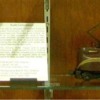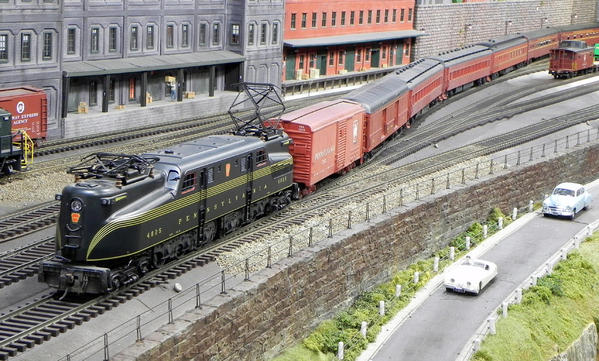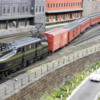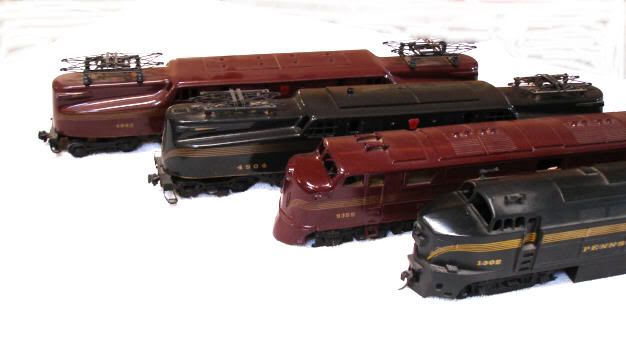Originally Posted by rrjjf:
I have converted many Lionel. MTH Weaver and Williams scale length GG-1 models to 2 rail for the past several years. I have never converted an original Lionel short GG-1 to 2 rail and would not consider doing so as the originals have some collector value as they are. I do not see a scale modeler wanting a stubby GG-1 for a scale two rail layout.
Joe Foehrkolb
Hello Joe, Reading these few paragraphs set off my Spidey Senses! I know about your wheel conversions, but on a scale MTH GG-1? I have one of these cast bodied beasts and have spent countless hours looking at it's ugly, highly undersized but nicely detailed 3 rail drivers.
I read on the Forum here about someone who ground down the 3 rail wheels into a likable semblance of a scale looking wheel. But, in doing this to the GG-1 drivers, all the cast in quill drive detail would go away, and that aint' acceptable.
So, did MTH offer these motors in a 2 rail option back in the late 90's, and if they did, was the drive detail available on these wheels? Sunset has a real beautiful GG-1, but from what I could see of their wheels, they looked to be a scale size but had no drive detail. Kinda' like looking at a steam engine driver. All spokes.
Along with the GG-1, I have it's big brother, the New Haven EF-3b which shares a common wheel with the G. I've scale wheeled (36") the pilot trucks on both with no problems, but these darn drivers, that's another story. Bill Lester









